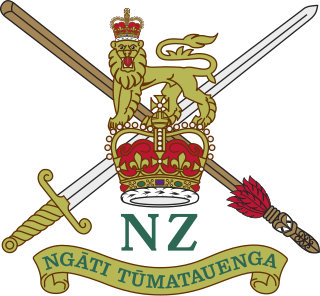
The New Zealand Expeditionary Force (NZEF) was the title of the military forces sent from New Zealand to fight alongside other British Empire and Dominion troops during World War I (1914–1918) and World War II (1939–1945). Ultimately, the NZEF of World War I became known as the First New Zealand Expeditionary Force. The NZEF of World War II was known as the Second New Zealand Expeditionary Force (2NZEF).
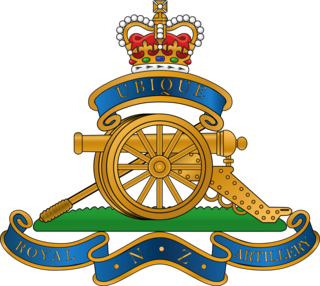
The Royal Regiment of New Zealand Artillery is the artillery regiment of the New Zealand Army. It is effectively a military administrative corps, and can comprise multiple component regiments. This nomenclature stems from its heritage as an offshoot of the British Army's Royal Artillery. In its current form it was founded in 1947 with the amalgamation of the regular and volunteer corps of artillery in New Zealand. In 1958 in recognition of services rendered it was given the title the Royal Regiment of New Zealand Artillery.

The 3rd New Zealand Division was a division of the New Zealand Military Forces. Formed in 1942, it saw action against the Japanese in the Pacific Ocean Areas during the Second World War. The division saw action in the Solomon Islands campaign during 1943–1944, during which it undertook landings on Vella Lavella, the Treasury Islands and the Green Islands. Due to manpower shortages, for most of its existence the division consisted of only two infantry brigades in addition to support personnel, with its third brigade being disbanded shortly after formation. In 1944, manpower shortages in the New Zealand economy became acute led to the disbandment of the division. The majority of its manpower was returned to civilian employment, although around 4,000 men were sent to Italy to reinforce the 2nd Division, seeing further action before the end of the war in May 1945.
N Force was a small New Zealand Army unit of infantry and artillery that garrisoned the Australian territory of Norfolk Island between October 1942 and February 1944, during the Second World War. The island was considered strategically important due to the cable station there that linked Australia and New Zealand. N Force was formed by detaching units from the 3rd New Zealand Division. An airfield was also constructed that was manned by Royal New Zealand Air Force (RNZAF) personnel.
The 2nd/10th Field Regiment, Royal Australian Artillery was an Australian Army Reserve artillery regiment, assigned to the 2nd Division. Formed in 1991, and based in Victoria, the regiment drew on the lineage of a number of disbanded units that had previously existed in that state. In 2013, the regiment was reduced to a single battery, designated the 2nd/10th Light Battery. It was assigned to the 5th/6th Battalion, Royal Victoria Regiment, and tasked with training artillery observers and organic fire support to the battalion. It was equipped with the L16 81mm Mortar as the primary armament, while M2A2 Howitzers were retained for ceremonial purposes.

The 2nd Mountain Artillery Regiment is an inactive mountain artillery regiment of the Italian Army, which was based in Trento in Trentino. The regiment was formed in 1915 by the Royal Italian Army as 3rd Mountain Artillery Regiment. In World War I the regiment's groups and batteries served on the Italian front.
The 36th Battalion was an infantry battalion of the New Zealand Military Forces, which served during the Second World War. Attached to the 8th Brigade, New Zealand 3rd Division, the battalion was formed in late 1941 and saw service in the Pacific against the Japanese. They were initially used for garrison duties on Fiji and Norfolk Island before being committed to the fighting in the Solomon Islands in 1943. The battalion was disbanded in late 1944 as part of a partial demobilisation of New Zealand forces, which saw some of its personnel being returned to civilian employment while others were sent to Italy as reinforcements for the New Zealand 2nd Division.
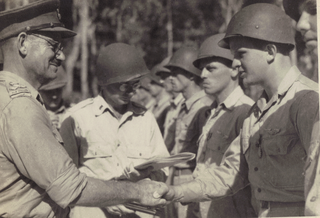
The 8th Brigade was a formation of the New Zealand Military Forces, which served during the Second World War as part of the 2nd New Zealand Expeditionary Force. Eventually forming part of the 3rd Division, the brigade served in the Pacific Ocean theatre of the war. Raised in late 1940, initially the brigade was employed on garrison duties on Fiji before returning to New Zealand in mid-1942. In December 1942, it was sent to New Caledonia where they remained until early September 1943, when they moved to Guadalcanal to prepare for operations in the Solomon Islands. The brigade's only combat operation of the war came in October–November 1943, when it captured the Treasury Islands. It was disbanded in late 1944 due to manpower shortages in the New Zealand economy.
The 35th Battalion was an infantry battalion of the New Zealand Military Forces, which served in the Pacific theatre of the Second World War from 1941 to 1944. Attached to the 14th Brigade, the battalion was formed in late 1941 and saw service in the Pacific against the Japanese as part of the New Zealand 3rd Division. It initially performed garrison duties on Fiji and New Caledonia before being committed to the fighting in the Solomon Islands in 1943. Returned to New Zealand in late 1944, the battalion was disbanded in early 1945 during a partial demobilisation of New Zealand forces. Many of its personnel returned to civilian employment while others were sent to Italy as reinforcements for the New Zealand 2nd Division. The battalion was awarded four battle honours for its various engagements during the war.
Major General Walter Sneddon McKinnon, was an officer in the New Zealand Army. He joined the military in 1935 and served in the Second World War with various artillery units of the Second New Zealand Expeditionary Force. After the war he held a series of senior positions in the army, culminating with a term as Chief of the General Staff from 1965 to 1967. In his retirement, he was Chairman of the New Zealand Broadcasting Corporation.
The 29th Battalion was an infantry battalion of the New Zealand 3rd Division, raised for service during the Second World War. Serving in the Pacific, the battalion mainly undertook garrison duties and labouring tasks in Fiji and New Caledonia, but saw brief combat against the Japanese in the Treasury Islands in late 1943. In late 1944, the battalion returned to New Zealand and was broken up to provide reinforcements for the New Zealand 2nd Division in Italy. It was eventually disbanded in January 1945.
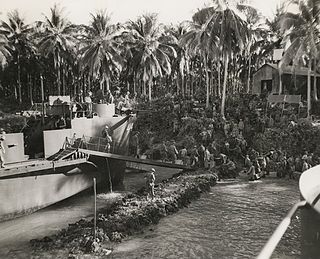
The 14th Brigade was a formation of the New Zealand Military Forces, which served during the Second World War as part of the 2nd New Zealand Expeditionary Force. Eventually forming part of the 3rd Division, the brigade served in the Pacific Ocean theatre of the war. Raised in December 1941, the brigade undertook garrison duties in Fiji before being relieved by US troops in mid-1942. After this, it took part in two combat actions against Japanese forces in 1943–1944: the Land Battle of Vella Lavella and the Battle of the Green Islands. In mid-1944, the brigade was broken up to return manpower to New Zealand industry and to meet the reinforcement needs of the 2nd Division in Italy.

The 30th Battalion was an infantry battalion of the New Zealand 3rd Division, raised for service during the Second World War. After being raised in late 1940, the battalion undertook garrison duties in Fiji and on New Caledonia during the early part of the war, before undertaking combat operations during the latter part of the Solomon Islands campaign, landing on Vella Lavella and the Green Islands in 1943–1944. The battalion was disbanded in mid-1944 to return manpower to the New Zealand economy and to provide reinforcements to the New Zealand 2nd Division, which was fighting in Italy.
The 34th Battalion was an infantry battalion of the New Zealand Military Forces, which served during the Second World War. Formed in Fiji in late 1940, it saw service in the Pacific against the Japanese.

Brigadier Robert Amos Row, was a senior officer in the New Zealand Military Forces and a two-time recipient of the Distinguished Service Order. He served in the New Zealand Expeditionary Force during the First World War, commanding an infantry battalion. In the Second World War, he commanded the 8th Brigade during the Battle of the Treasury Islands.
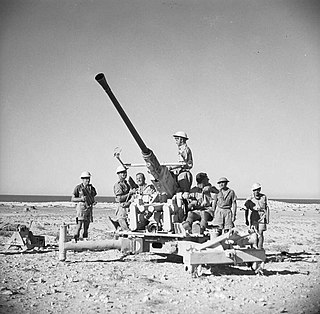
The 14th Light Anti-Aircraft Regiment was an air defence regiment of the New Zealand Military Forces raised during the Second World War. It saw service as part of the 2nd New Zealand Division during the North African, Tunisian and Italian campaigns, before being disbanded in October 1944.
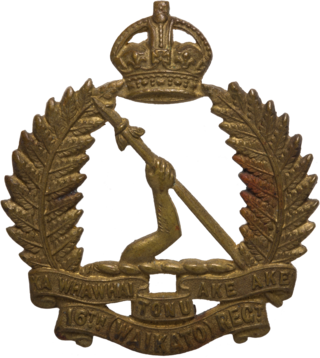
The Waikato Regiment was a territorial infantry regiment of the New Zealand Military Forces. The Regiment was formed in 1911 as the 16th (Waikato) Regiment and provided service companies to the Auckland Infantry Regiment during the First World War. Men from the Regiment also served with the 18th, 21st, 24th and 29th battalions of the 2nd New Zealand Expeditionary Force during the Second World War. The regiment was absorbed by the 1st Armoured Regiment (Waikato) of the Royal New Zealand Armoured Corps in 1950

The Northland Regiment was a territorial infantry regiment of the New Zealand Military Forces. The Regiment was formed in 1911 and provided service companies to the Auckland Infantry Regiment during the First World War. Men from the Regiment also served with the 18th, 21st, 24th and 29th battalions of the 2nd New Zealand Expeditionary Force during the Second World War. The regiment was amalgamated with the Auckland Regiment in 1964, becoming 3rd Battalion, Royal New Zealand Infantry Regiment.

The 17th Field Regiment was an artillery regiment of the New Zealand Military Forces raised during the Second World War. The regiment was formed on 2 September 1942 at Papakura Military Camp and consisted of 35 and 37 Batteries, which had formerly operated as independent batteries based in Fiji. In October they were joined by 12 Battery from the Territorial Force and the regiment departed for New Caledonia at the end of December. In September and October 1943, 17th Field Regiment took part in the Land Battle of Vella Lavella as part of the 14th Brigade Group and in February 1944 also took part in the Battle of the Green Islands. Due to manpower shortages, 17th Field Regiment was effectively disbanded in October 1944 along with the rest of the 3rd Division, although a small accounting party continued to exist until April 1945 to complete regimental records. Many of the men were sent with the 14th and 15th reinforcements to the 2nd New Zealand Division.

The 38th Field Regiment was an artillery regiment of the New Zealand Military Forces raised during the Second World War. The regiment was formed on 12 April 1943 at Papakura Military Camp and consisted of 49, 50 and 52 Batteries. The regiment departed New Zealand in eight different ships between May and July and continued training in New Caledonia. From late October till November 1943 it took part in the Battle of the Treasury Islands as part of the 8th Brigade Group. From April 1944, 38th Field Regiment began to have men transferred to other units or returned home to work in essential industries due to a manpower shortage. The regiment had been reduced to 48 men by August and the entire 3rd Division was formally disbanded in October 1944.












